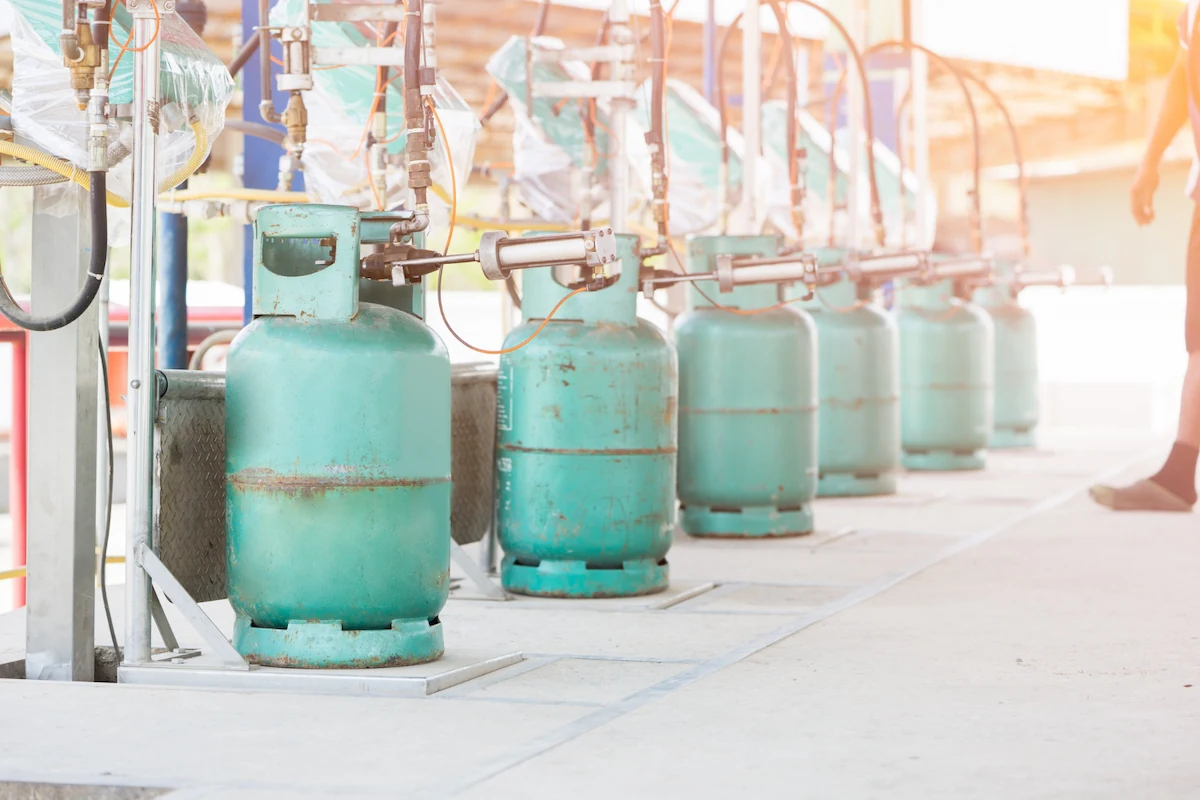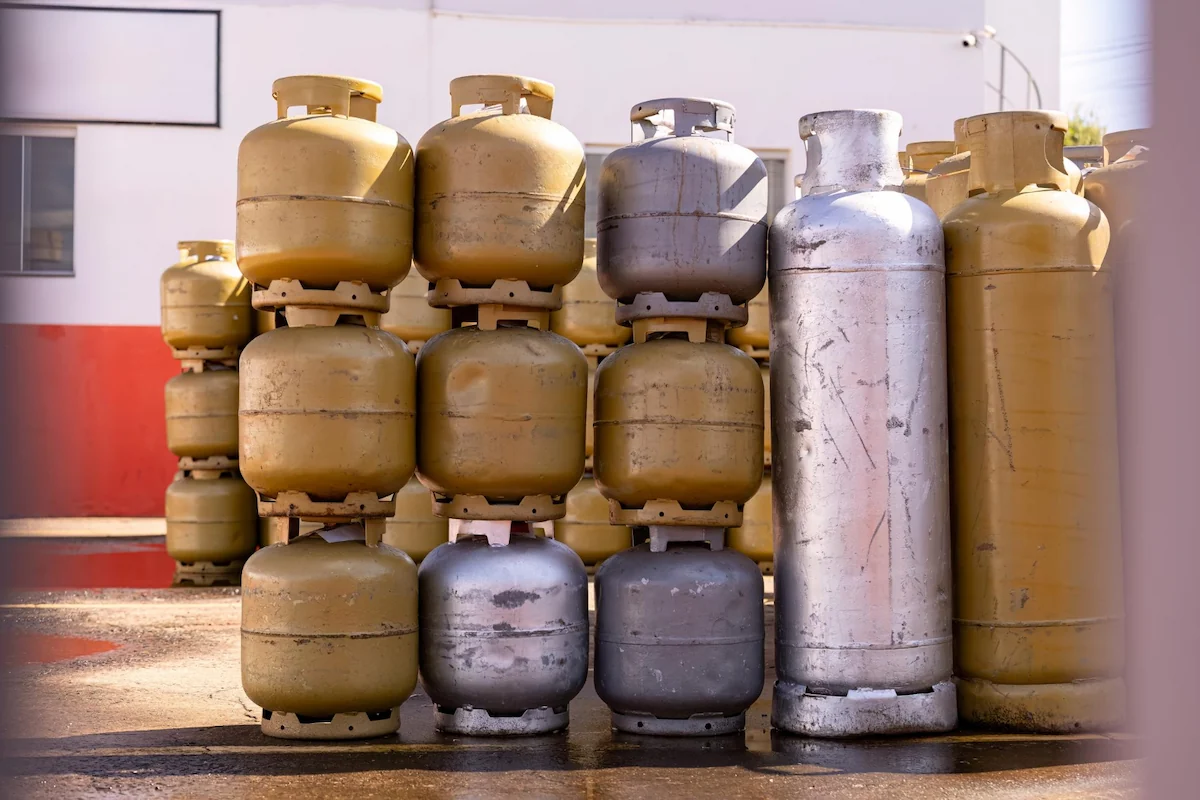
20-10-2025
Natural Gas Compositions, Its Types, and Its Advantages
Natural gas has become one of the energy sources used in industry and households. There are many benefits of natural gas, such as being a feedstock and a vehicle fuel.
Then, what are the natural gas compositions? This article discusses the primary compositions of natural gas. So, read this article until the end!
What Is Natural Gas?

Before we get into the natural gas composition, you must understand what natural gas is. Natural gas comes from coal or oil fields and has methane as the main element.
Natural gas is formed naturally under the Earth’s surface and collected in layers of densely porous rock. It comes from the remaining creatures buried in Earth’s and the sea’s layers for millions to hundreds of millions of years.
Heat and pressure convert fossils into hydrocarbon-rich materials, such as coal, petroleum, and natural gas. Since it is highly flammable, natural gas is commonly used as an industrial fuel, a household fuel, a power plant, and a feedstock.
Indonesia also produces natural gas as one of its commodities, in addition to crude oil. In 2022, Badan Pusat Statistik recorded that Indonesia produced 1.9 million MMscf of natural gas.
Globally, the United States has become a nation with the most gas production. In 2024, it produced 10,330 TWh of gas, defeating Russia, Canada, Qatar, and the United Kingdom.
Read also: 12 Functions of Caustic Soda for Household and Industry
Natural Gas Compositions
It should be noted that natural gas compositions can change after extraction from the Earth's layers and during several processes to become the final product. Before becoming the final product, gas derivatives (such as propane and butane) are removed to maintain quality and purity.
Generally, natural gas mainly contains methane (CH4), which is about 97% of it. Methane is a flammable hydrocarbon and releases a significant amount of energy when it is burned.
In addition, natural gas contains 10% ethane (C2H6), 0.5% carbon dioxide (CO2), nitrogen (N2), and other gases such as helium, hydrogen sulfide, noble gases, argon, and xenon.
Most importantly, propane and butane also become important natural gas compositions. Propane (C3H8) and butane (C4H10) from natural gas are usually utilized to manufacture LPH and other fuels. Here are some properties of natural gas compositions you must know:
- Methane: A component with a simple molecular structure that is highly flammable. Methane is often used in the chemical industry as feedstock, household fuel, and power plant fuel.
- Propane: A component that is often used for household and industrial fuel.
- Ethane: A hydrocarbon that has 2–6 hydrogen atoms. This compound is often used as industrial fuel, in gas-powered vehicles, and as a raw material for plastic manufacturing.
- Butane: A gas with 4–10 hydrogen atoms that is often sold in the form of household fuel cylinders. Butane is also usually used in industrial heating equipment.
- Carbon dioxide: This gas is formed during the combustion of fossil fuels.
Derivatives, such as propane, ethane, and butane, are eliminated in the purification process. Yet, they are utilized to create other products. For example, propane and butane in tubes can become household fuels.
Read also: 9 Petroleum Products You Must Know, from Gasoline to Naphtha
Types of Natural Gases

Natural gas is a colorless, mixed gas that is flammable, making it beneficial for human activities. It is categorized into several types according to its composition. Below is the complete explanation:
- Sweet gas: Natural gas that contains less hydrogen sulfide (a poisonous gas that smells like rotten eggs).
- Dry gas: Methane-rich natural gas.
- Sour gas: Hydrogen sulfide-rich natural gas.
- Wet gas: Hydrocarbon-rich (ethane, propane, and butane) natural gas.
Along with those types, natural gas is also divided into some categories you might already be familiar with in the household and industry sectors, such as:
1. Liquefied Petroleum Gas (LPG)
LPG is a natural gas blended with light hydrocarbons and has been liquefied. Typically, LPG contains butane, propane, and other compounds, such as pentane, pentene, and propylene.
LPG is divided into propane LPG, butane LPG, and propane and butane-mix LPG. To keep it liquefied, LPG must be stored in a pressurized tank.
2. Compressed Natural Gas (CNG)
CNG is a gas that has been compressed at high pressure so that more gas can be distributed. Because it is compressed, CNG must meet commercial gas specifications, particularly limits on water content and heavy hydrocarbons to avoid condensation.
3. Liquefied Natural Gas (LNG)
LNG is a gas liquefied at -163 degrees Celsius under atmospheric pressure. It contains 90% methane and has been purified to remove carbon dioxide, water, heavy hydrocarbons, and other compounds.
4. Pipeline Natural Gas (PNG)
PNG is a gas containing methane and a few other hydrocarbons. PNG is considered cleaner because it has many supplies and can reduce emissions.
That is information about natural gas compositions and other knowledge regarding this energy source. Natural gas must be distributed with special care because it is highly flammable.
If your company plans to distribute LPG, the PT Chandra Daya Investasi Tbk (CDI Group) subsidiaries, PT Chandra Shipping International (CSI) and PT Marina Indah Maritim (MIM), provide LPG and chemical shipping services with nine vessels of 106,650 DWT capacity. This number might increase as time goes by.
So, make sure to use safe and standardized LPG and chemical shipping services from Chandra Asri Group!
Read also: Get to Know Olefins & the Uses in the Petrochemical Industry